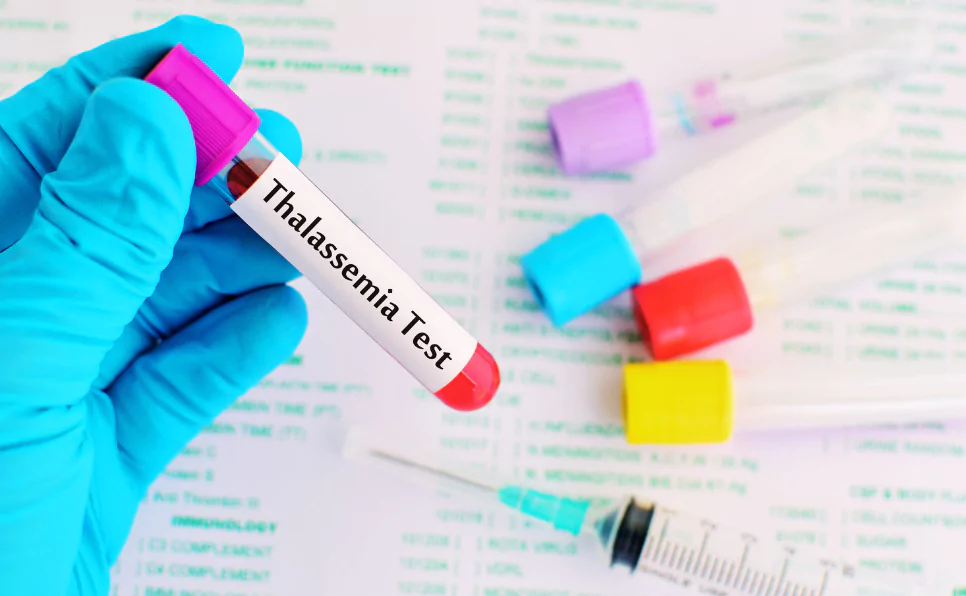Monogenic diabetes, a collection of inherited disorders, impacts insulin production or function in various ways.
This type of diabetes also referred to as monogenic diabetes syndrome, may be present from birth or develop later in life.
The purpose of this article is to give a comprehensive view of monogenic diabetes, looking at its causes, different types, diagnosis, and treatment.
Quick Overview:
While type 1 and type 2 diabetes are commonly known and involve multiple genes and environmental factors, monogenic diabetes, as the name suggests is caused by mutations in a single gene.
Monogenic diabetes, or monogenic diabetes syndrome, includes disorders like neonatal diabetes mellitus (NDM) and maturity-onset diabetes of the young (MODY). NDM typically manifests in infants within the first six months, while MODY generally appears in adolescence or early adulthood.
The symptoms and complications of monogenic diabetes vary based on the type and severity of the gene mutation, necessitating genetic testing for accurate diagnosis and treatment.
The genetics of MODY involve mutations in specific genes like HNF1A (MODY3), GCK (MODY2), and HNF4A (MODY1), each affecting insulin production or function differently. For example, HNF1A mutations reduce insulin secretion, while GCK mutations shift the threshold for glucose-stimulated insulin secretion.
Treatment options also vary; some forms of MODY respond well to sulfonylureas, while others may require insulin injections.
NDM, on the other hand, is caused by mutations in genes like KCNJ11 and ABCC8, impacting insulin production and leading to severe blood glucose level elevations. Some NDM cases are temporary, resolving within the first year of life, while others are permanent.
For a detailed exploration of monogenic diabetes, including its impact and management, read the full article.
Understanding Different Types of Diabetes: Type 1, Type 2, and Monogenic
Type 1 and type 2 diabetes are the most common forms, affecting millions of people all around the globe. Both are polygenic, meaning they are linked to multiple genes and environmental influences.
Type 1 diabetes happens when the immune system mistakenly attacks and kills the insulin-making cells (beta cells) in the pancreas. This leads to insufficient insulin and high levels of blood glucose. Individuals with type 1 diabetes must take insulin injections or use an insulin pump to live.
Type 2 diabetes happens when the body becomes less responsive to insulin or does not make enough insulin for its needs. This results in glucose accumulating in the blood instead of being used by cells for energy. People with type 2 diabetes may need to take medications, injectable drugs, or insulin to manage their blood glucose levels.
Monogenic diabetes, including MODY in diabetes, is a different form of diabetes, caused by a mutation or change in one gene. This mutation impacts the growth, function, or control of the pancreas’s beta cells or how effectively insulin can lower blood glucose levels. Monogenic diabetes can be inherited from one or both parents or occur randomly.
Monogenic diabetes, or what is monogenic diabetes, makes up about 1 to 4 percent of all diabetes cases. It can be split into two main categories: neonatal diabetes mellitus (NDM) and maturity-onset diabetes of the young (MODY).
NDM appears in newborns and young infants, who experience high blood glucose levels within the first six months of life. Depending on whether the gene mutation resolves or persists over time, NDM can be temporary (transient) or permanent.
MODY, a form of monogenic diabetes syndrome, is much more common than NDM and typically first appears in adolescence or early adulthood. MODY is characterized by mild to moderate high blood glucose levels (hyperglycemia) that in most cases does not require insulin treatment.
Monogenic diabetes is often mistaken for type 1 or type 2 diabetes because the symptoms and presentation are similar.
However, monogenic diabetes has unique genetic causes and may need different treatment options than type 1 or type 2 diabetes. Hence, genetic testing and counseling are vital for people suspected to have monogenic diabetes or who have a family history of this condition.
Genetics of Maturity-Onset Diabetes of the Young (MODY)
MODY in diabetes is a version of monogenic diabetes that generally appears in teenagers or young adults but can also pop up later in life.
The causes of MODY type diabetes are mutations in genes that control the growth, function, and regulation of insulin-making cells (beta cells) in your pancreas.
Depending on the gene involved, MODY can show different characteristics and need different treatments.
According to the Endocrine Society, some common genes causing MODY are:
- HNF1A (MODY3): This gene makes a protein that helps control other genes involved in glucose metabolism and insulin secretion. If this gene changes, it can lower insulin secretion and cause mild to moderate high blood glucose levels. People with HNF1A-MODY might benefit from sulfonylureas treatment, an oral diabetes medicine that stimulates insulin release.
- GCK (MODY2): This gene makes an enzyme involved in the first step of glycolysis, the process of breaking down glucose for energy. Changes in this gene can shift the threshold for glucose-stimulated insulin secretion, causing mild and stable high blood glucose levels. People with GCK-MODY usually do not require any treatment because their blood glucose levels do not fluctuate significantly and do not cause complications.
- HNF4A (MODY1): Like HNF1A, this gene makes a protein that helps control other genes involved in glucose metabolism and insulin secretion. Changes in this gene can lower insulin secretion and cause mild to moderate high blood glucose levels. People with HNF4A-MODY might also benefit from sulfonylureas treatment.
- HNF1B (MODY5): This gene makes a protein that helps control the development and differentiation of various tissues, including the pancreas. Changes in this gene can cause abnormal pancreas development and reduced beta cell mass, leading to a severe insulin deficiency and diabetes. People with HNF1B-MODY may also have other congenital anomalies, like kidney cysts, genital malformations, and liver problems. They usually need insulin injections to manage their diabetes.
Other genes that can cause MODY include PDX1 (MODY4), NEUROD1 (MODY6), KLF11 (MODY7), CEL (MODY8), PAX4 (MODY9), INS (MODY10), and BLK (MODY11). Each of these genes plays a different role in beta cell function or development, and each mutation affects glucose metabolism and insulin secretion differently.
Genetics of Neonatal Diabetes Mellitus (NDM)
NDM is a form of monogenic diabetes that appears in newborns and young infants, usually within the first six months of life.
It happens when genes that affect insulin production or action mutate. Depending on the gene involved, NDM can be temporary or permanent.
Some of the most common genes causing NDM are:
- KCNJ11: This gene makes a protein that forms part of a potassium channel in the beta cell membrane. This channel regulates the electrical activity and insulin secretion of the beta cell in response to glucose. Changes in this gene can impair the channel function and prevent insulin release, causing severe high blood glucose levels and a life-threatening condition called ketoacidosis. People with KCNJ11-NDM may benefit from sulfonylureas treatment, which can restore the channel function and insulin secretion. In some cases, KCNJ11-NDM can be temporary and resolve spontaneously within the first year of life.
- ABCC8: This gene makes a protein that forms part of a complex with the KCNJ11 protein in the beta cell membrane. This complex controls the opening and closing of the potassium channel and modulates insulin secretion. Changes in this gene can also impair the channel function and prevent insulin release, causing severe high blood glucose levels and ketoacidosis. People with ABCC8-NDM may also benefit from sulfonylureas treatment. In some cases, ABCC8-NDM can be temporary and resolve spontaneously within the first year of life.
- INS: This gene makes the insulin hormone itself. Changes in this gene can affect the making, folding, processing, or secretion of insulin, resulting in reduced or defective insulin production. People with INS-NDM usually need insulin injections to manage their diabetes. INS-NDM is always permanent and does not resolve spontaneously.
Other genes that can cause NDM include GCK, PDX1, FOXP3, EIF2AK3, GLIS3, IER3IP1, and SLC19A2. Each of these genes plays a different role in insulin production or action, and each mutation affects glucose metabolism and insulin secretion differently.
How these gene changes lead to diabetes
As explained above, mutations in different genes can cause various forms of monogenic diabetes by affecting different aspects of insulin production or action.
Insulin is crucial for maintaining normal blood glucose levels and preventing high or low blood glucose levels. High blood glucose levels can lead to acute complications like dehydration, ketoacidosis, and coma, as well as chronic complications like nerve damage, kidney damage, eye damage, and heart disease.
Low blood glucose levels can cause symptoms such as sweating, trembling, hunger, confusion, seizures, and loss of consciousness.
Gene mutations that lower or impair insulin production can lead to diabetes by preventing the beta cells from responding to glucose and releasing enough insulin to meet the body’s needs. This leads to high blood glucose levels and its associated complications.
Gene mutations that affect insulin action can lead to diabetes by preventing the insulin from binding to its receptors on the target cells or activating the downstream signaling pathways that mediate glucose uptake and use. This leads to insulin resistance and high blood glucose levels.
Gene mutations that affect both insulin production and action can cause diabetes by causing a combination of both defects, leading to severe high blood glucose levels and ketoacidosis.
Monogenic diabetes is a unique type of diabetes triggered by changes, or mutations, in just a single gene. This makes it different from the more common types 1 and 2 diabetes, which are influenced by numerous genes and environmental conditions. To spot monogenic diabetes, you generally need genetic testing.
A mutation’s characteristics and where it occurs can play a big role in how severe the diabetes becomes and when it shows up.
The Implication of Genotype on Phenotype in Monogenic Diabetes
Monogenic diabetes syndrome can take on different forms and show up at different times, depending on the affected gene.
Some types of monogenic diabetes can be passed down from one or both parents, while others might suddenly appear even without any family history.

Certain forms of monogenic diabetes also come with additional health issues like kidney disease, hearing loss, or neurological disorders.
The signs of monogenic diabetes are often similar to those of types 1 and 2 diabetes. These include increased thirst, frequent urination, tiredness, blurred vision, and weight loss. However, some forms of monogenic diabetes may present milder or fluctuating symptoms, making them more difficult to spot.
As with types 1 and 2 diabetes, people with monogenic diabetes may face complications like nerve damage, eye damage, kidney damage, heart disease, and stroke. But the risks can vary depending on the specific gene involved and the treatment used.
Monogenic diabetes can interact with other genetic and environmental factors in multiple ways.
For instance, lifestyle factors like diet, exercise, pregnancy, stress, or infections can affect glucose levels or insulin sensitivity in certain forms of monogenic diabetes.
Additionally, other genes may enhance or decrease the impact of the mutation. And certain medications or chemicals can trigger some forms of monogenic diabetes by interfering with insulin production or action.
Diagnosing Monogenic Diabetes
Diagnosing monogenic diabetes or MODY in diabetes is often challenging. This is because monogenic diabetes is rare and its symptoms and blood tests are similar to those of types 1 and 2 diabetes, leading to frequent misdiagnoses.
Additionally, the forms of monogenic diabetes and the age at which they appear can vary among and within families. Monogenic diabetes can also be influenced by other factors that can conceal or mimic its features.
The current methods for diagnosing monogenic diabetes include clinical criteria and genetic testing.
Clinical criteria look at factors such as age at diagnosis, family history, the presence or absence of autoantibodies (markers of immune attack), response to treatment, and related conditions.
Genetic testing involves analyzing DNA samples from blood or saliva in a lab to identify the specific gene mutation causing monogenic diabetes.
Early and accurate diagnosis of monogenic diabetes or MODY type diabetes is important. It can help avoid treatments that aren’t necessary or are unsuitable and could lead to side effects or complications.
For instance, some forms of monogenic diabetes can be managed with pills instead of insulin injections. Early diagnosis can also help maintain glucose control and prevent long-term complications by using the most effective treatment for each form of monogenic diabetes.
Additionally, it can offer genetic counseling and testing for family members who might be at risk or already have monogenic diabetes.
Ways to Treat Monogenic Diabetes
The treatment for monogenic diabetes can be different from that for type 1 and type 2 diabetes.
It depends on what genetic change caused it and how severe the symptoms are. Some forms of monogenic diabetes can be managed with a good diet and exercise, while others might need insulin shots.
But, not all cases of monogenic diabetes need insulin. Some can be helped with oral medicines called sulfonylureas, which make the pancreas create more insulin.
A new kind of treatment called personalized medicine makes the treatment fit the individual patient’s genetic makeup, lifestyle, and environmental factors.
This might play a big part in treating monogenic diabetes because it can find out the specific gene change that’s causing it and figure out the best treatment for each patient.
For example, some people with MODY might be able to switch from insulin to sulfonylureas or even stop taking medication altogether if genetic testing confirms their diagnosis.
Personalized medicine might also stop complications and improve long-term outcomes for people with monogenic diabetes.
Final Words
Monogenic diabetes is a rare but important form of diabetes that affects about 1 to 4 percent of all diabetes cases in the United States.
It happens when a change in a single gene affects how insulin is made or works, leading to high blood sugar levels. It can be split into two main types: neonatal diabetes mellitus (NDM) and maturity-onset diabetes of the young (MODY).
It’s very important to understand and research monogenic diabetes to get better at diagnosing and treating it.
Genetic testing can find out the specific gene change causing monogenic diabetes and guide the choice of treatment which improve the quality of life for millions of people living with this disease.
References:
- https://www.niddk.nih.gov/health-information/diabetes/overview/what-is-diabetes/monogenic-neonatal-mellitus-mody
- https://www.healthline.com/health/diabetes/monogenic-diabetes
- https://www.endocrine.org/patient-engagement/endocrine-library/monogenic-diabetes
- https://pubmed.ncbi.nlm.nih.gov/29931562

Dr. Sumeet is a seasoned geneticist turned wellness educator and successful financial blogger. GenesWellness.com, leverages his rich academic background and passion for sharing knowledge online to demystify the role of genetics in wellness. His work is globally published and he is quoted on top health platforms like Medical News Today, Healthline, MDLinx, Verywell Mind, NCOA, and more. Using his unique mix of genetics expertise and digital fluency, Dr. Sumeet inspires readers toward healthier, more informed lifestyles.





